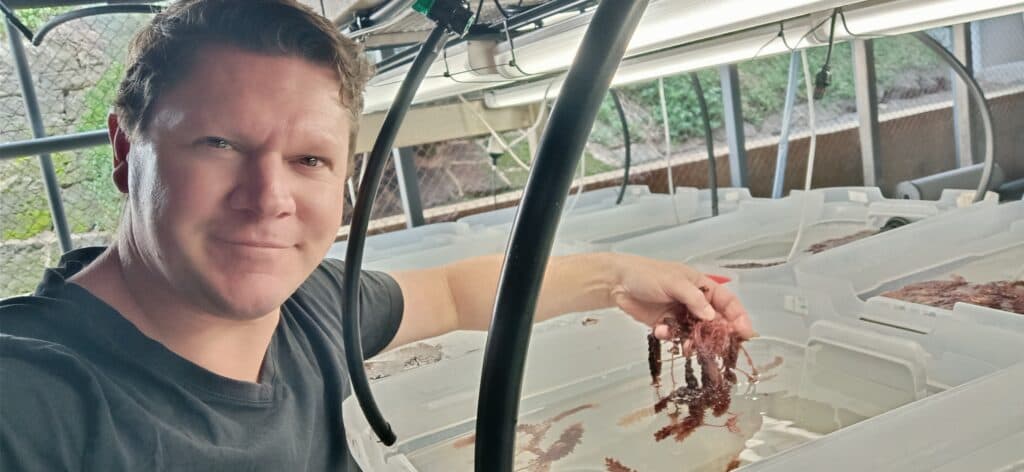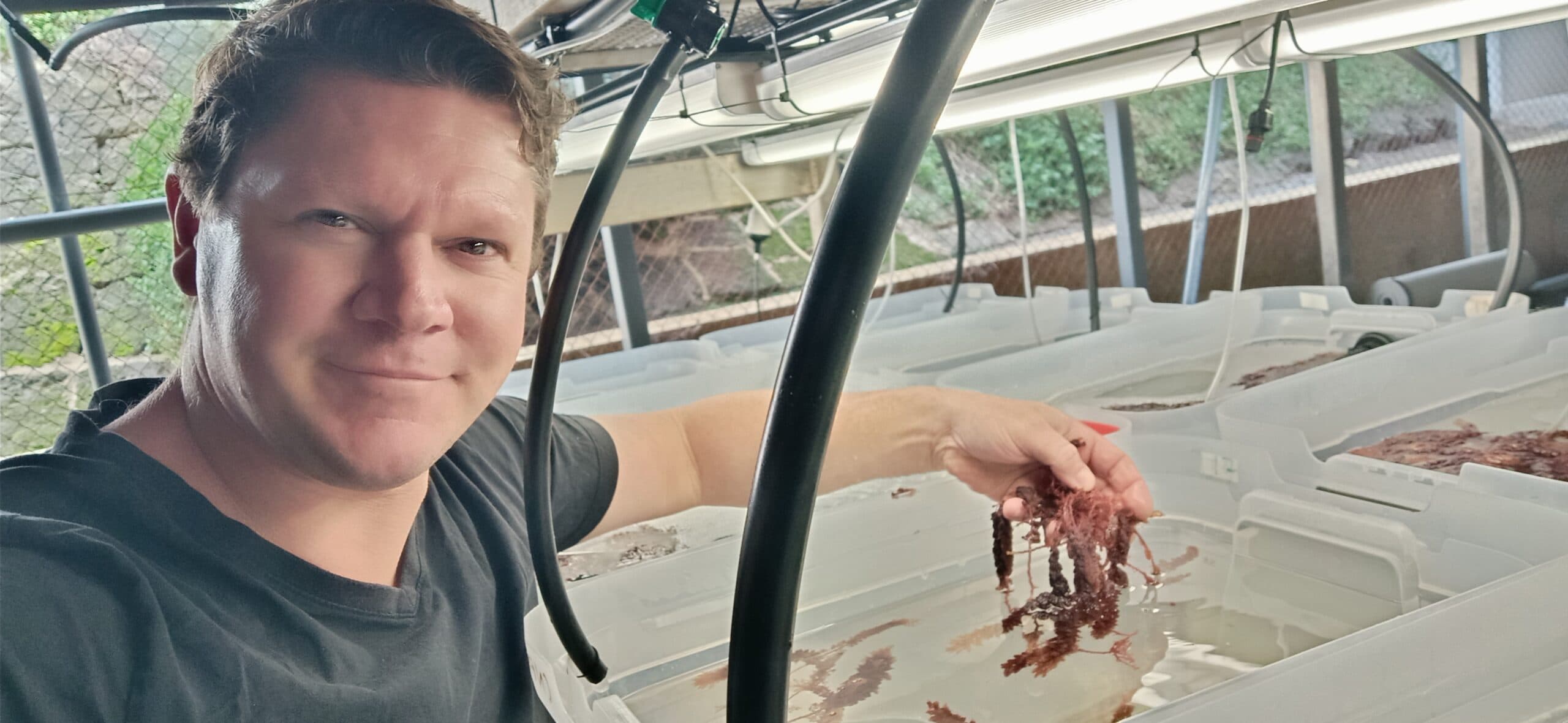Asparagopsis could become the ‘wheat crop’ of Australia’s oceans, and is the key to a world first, carbon neutral meat, grown and processed here in Australia. However currently, there are no clear aquaculture methods or well-developed supply chains to reliably scale-up production.
AgriFutures Australia’s Emerging Industries Program is funding a trial for new cultivation techniques to help catapult this industry forward. University of Western Australia’s Dr John Statton is the lead researcher of the ‘Developing Asparagopsis cultivation at scale for rapid industry growth’ project, and his team are developing and refining cultivation techniques to reliably produce Asparagopsis seed stock to fast-track the product to market.
“At the moment there is a reliance on wild harvest of Asparagopsis but in some parts of Australia, the wild capture carrying capacity is either unknown or too small to be commercially viable. We just can’t access the tonnage we need to service the livestock industry. We have been able to develop small commercial quantities of seaweed juveniles in the lab which could be cultivated within production infrastructure,” said Dr Statton.
And there is an added win for offshore aquaculture producers.
“We’ve got the seaweed to grow on ropes and substrates in our lab trials which presents an opportunity for some aquaculture groups to diversify. You could use the infrastructure of existing pearl or mussel farms, put the Asparagopsis out there and just set and forget. They don’t need to be fed like fish, or cleaned like pearl shells. And the seaweed helps absorb other nutrients. You just leave them there and they dominate.”
The other aspect of the project is looking at how environmental conditions can influence the concentration of bromoform.











